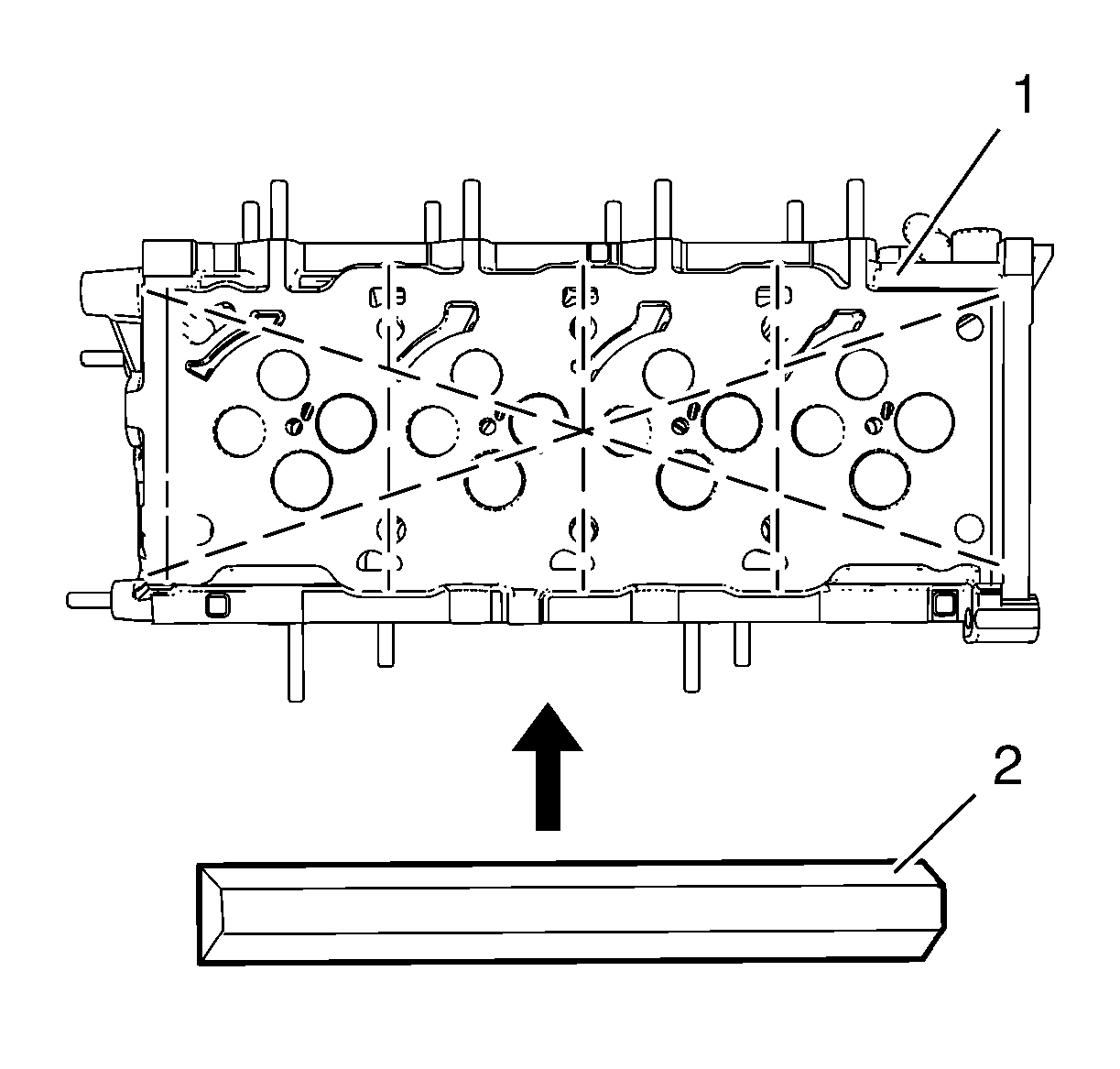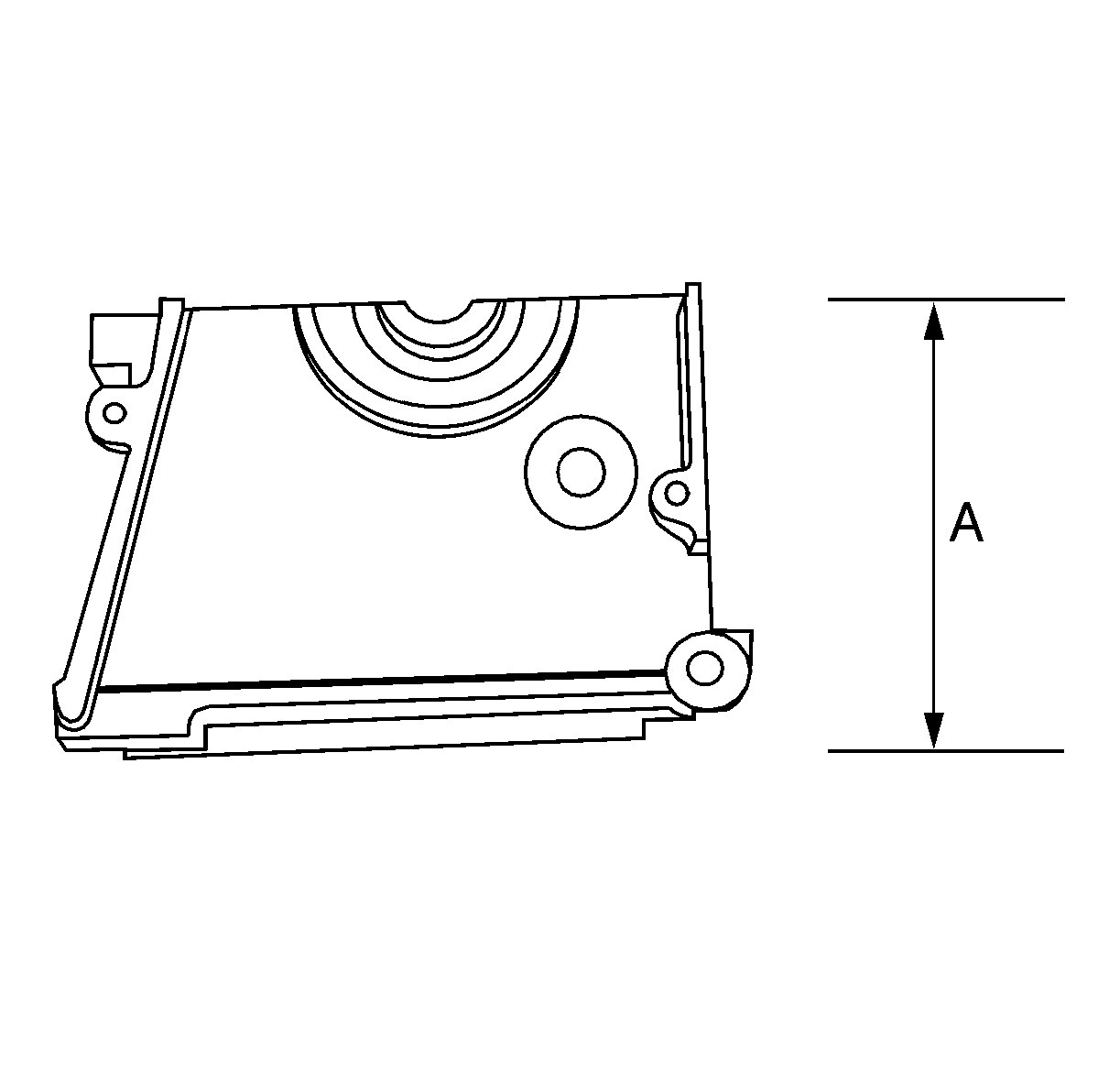Cleaning Procedure

- Remove any old thread sealant, gasket material or sealant.
- Clean all cylinder head (1) surfaces with non-corrosive solvent.
Warning: Refer to Safety Glasses and Compressed Air Warning in the Preface section.
- Blow out all the oil galleries using compressed air.
- Remove any carbon deposits from the combustion chambers.
Visual Inspection
- Inspect the cylinder head camshaft bearing surfaces for the following conditions:
| • | Excessive scoring or pitting |
| • | Discoloration from overheating |
| • | Deformation from excessive wear |
| • | If the camshaft bearing journals appear to be scored or damaged, you must replace the cylinder head. DO NOT machine the camshaft bearing journals. |
- If any of the above conditions exist on the camshaft bearing surfaces, replace the cylinder head.
- Inspect the cylinder head for the following:
| • | Cracks, damage or pitting in the combustion chambers |
| • | Debris in the oil galleries -- Continue to clean the galleries until all debris is removed. |
| • | Coolant leaks or damage to the deck face sealing surface -- If coolant leaks are present, measure the surface warpage as described under cylinder head measurement - deck flatness inspection. |
| • | Damage to any gasket surfaces |
| • | Burnt or eroded areas in the combustion chamber |
| • | Cracks in the exhaust ports and combustion chambers |
| • | External cracks in the water passages |
| • | Restrictions in the intake or exhaust passages |
| • | Restrictions in the cooling system passages |
| • | Rusted, damaged or leaking core plugs |
- If the cylinder head is cracked or damaged, it must be replaced. No welding or patching of the cylinder head is allowed.
Cylinder Head Measurement
Camshaft Journal Clearance
Caution: Refer to Fastener Caution in the Preface section.
- Install the camshaft bearing cap in the cylinder head without the camshaft.
- Install the camshaft cap bolts and tighten to
28 N·m (21 lb ft)
.
- Measure the camshaft bearings using an inside micrometer.
- Subtract the camshaft journal diameter from the camshaft bearing diameter. This will provide the running clearance. If the running clearance exceeds specifications and the camshaft journals are within specification, replace the cylinder head. Refer
to
Engine Mechanical Specifications
.
Camshaft Journal Alignment
- Inspect the cylinder head camshaft bearing surfaces for any imperfections or scratches that could inhibit proper camshaft clearances. Repair minor imperfections or scratches.
Note: Coat the camshaft bearings and camshaft with NEW engine oil. Refer to
Adhesives, Fluids, Lubricants, and Sealers
.
- Install the camshaft into the cylinder head.
- Install the camshaft bearing caps.
- Install the camshaft cap bolts and tighten to
28 N·m (21 lb ft)
.
- Ensure the camshaft spin freely inside the cylinder head. If the camshaft does not run freely, replace the cylinder head.
Deck Flatness Inspection

- Ensure the cylinder head decks are clean and free of gasket material.
- Inspect the surface for any imperfections or scratches that could inhibit proper cylinder head gasket sealing.
- Place a straight-edge (2) as in the graphic shown on cylinder head deck face surface (1).
- Measure the clearance between the straight-edge and the cylinder head deck face using a feeler gage at 4 points along the straight-edge.
- Check the sealing surfaces for deformation and warpage. The cylinder head sealing surfaces must be flat within 0.05 mm (0.002 in) maximum.

- Measure the height of the cylinder head from sealing surface to sealing surface (A). The cylinder head height should be 129.9-130.1 mm
(5.1142-5.1220 in). If the cylinder head height is out of specifications, replace the cylinder head.
Valve Inspection

- Inspect the valve for damage from the head to tip for the following conditions:
| • | Pitting in the valve seat area (1) |
| • | Lack of valve margin (2) |
| • | Bending in the valve stem (3) |
| • | Pitting or excessive wear in the stem (4) |
| • | Worn valve key grooves (5) |
- Replace the valve if any of these conditions exist.
- Inspect the valve springs. If the valve spring ends are not parallel, replace the valve spring.
- Inspect the valve spring seating surface of the valve rotators for wear or gouges. Replace as required.




